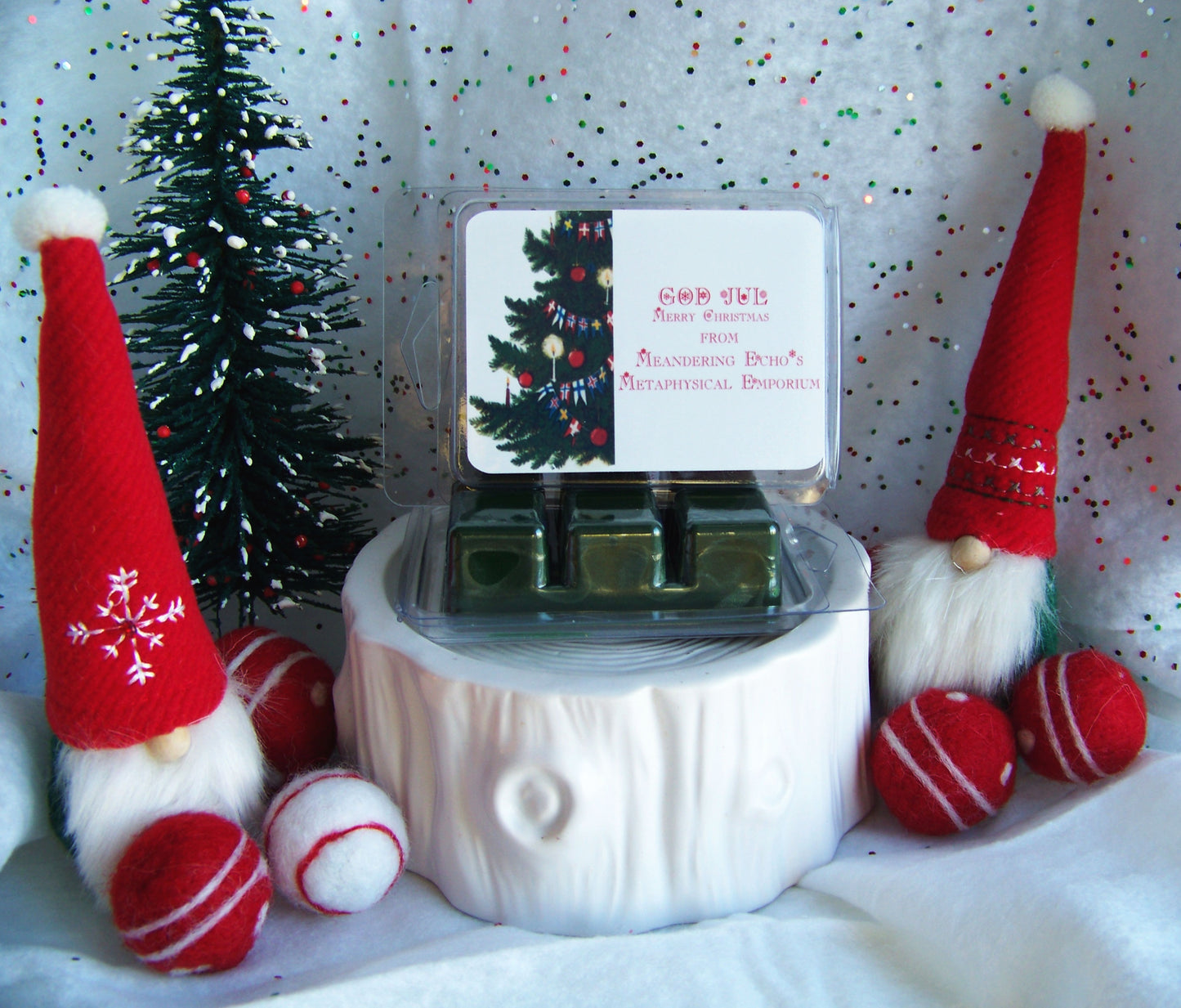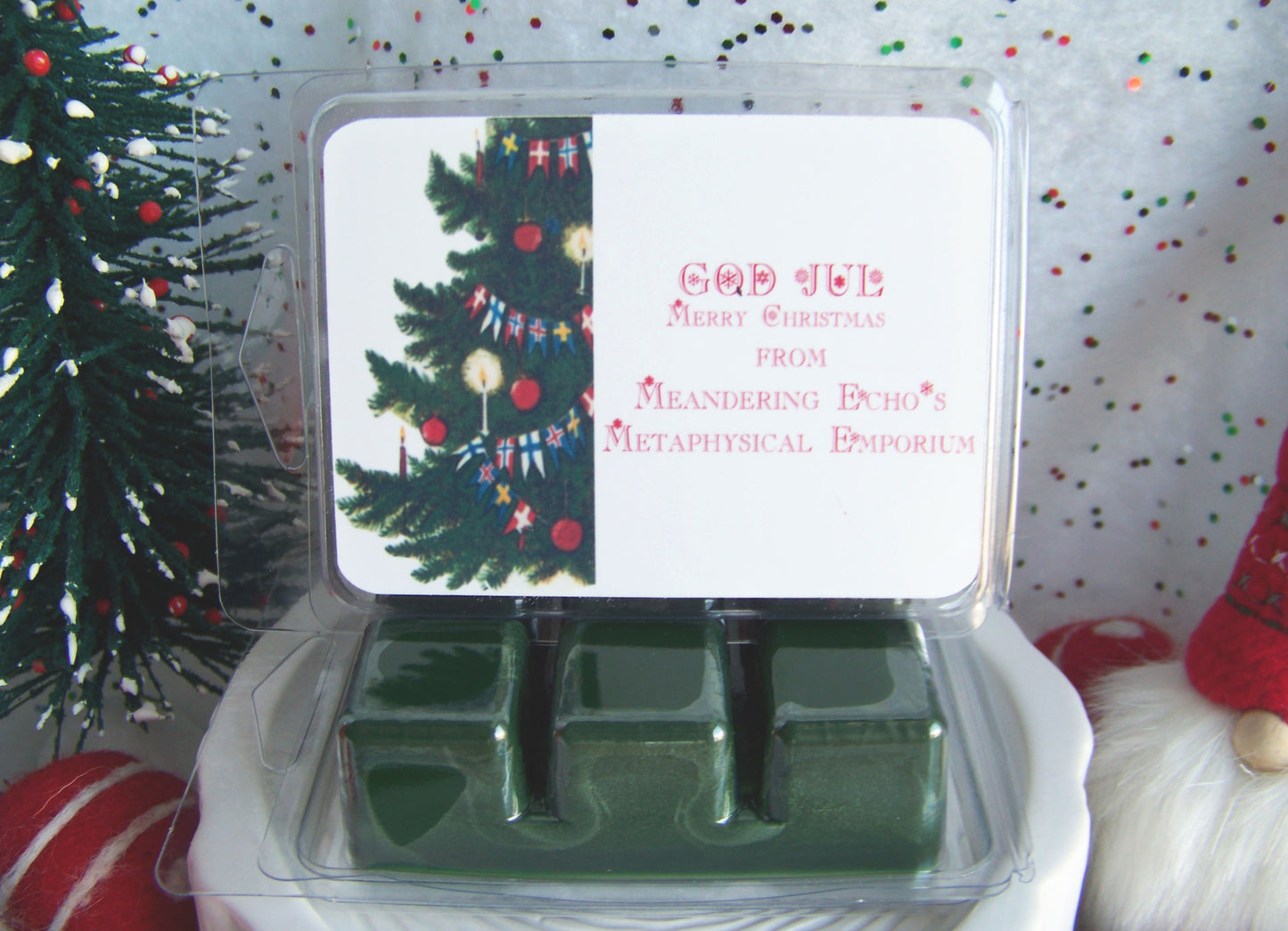Meandering Echo's Metaphysical Emporium
"God Jul" - Merry Christmas Wax Melts
"God Jul" - Merry Christmas Wax Melts
Couldn't load pickup availability
"God Jul" - Norwegian for Merry Christmas
2.8 to 3 ounces
Soy Wax
Green
The smell of a freshly cut 8 foot pine comes to life with notes of pine needles, Douglas fir, earthy patchouli, and cedarwood.
Juletre - the Christmas Tree
"It is difficult to imagine a Christmas without a "Juletre" - Christmas Tree -- these days. It would be like soup without the main ingredient or an orchard without fruit. Some customs disappear, but each year there are more and more Juletre (Christmas trees)."
Freely translated
"Jul og juleskikke" from the magazine "The Childrens’ Christmas Eve" 1898.
The Christmas tree custom came to Norway in the 1800s. In the cities it became common around 1830, and by 1840 it had become so commonplace that Henrik Wergeland mentions it in his poem «Vintersang» or “Winter Song“. (Barnesange 1840):
"Gleden dog ei fryser, muntre oie skue juletreets lue, friskt mot jul det gaar!"
In the beginning the "Juletre" (Christmas tree) was a city phenomenon. And it was only the wealthy that could afford the purchase of a juletre. In 1843 Jorgen Moe (of Norwegian Fairytales fame) wrote a letter about Christmas. He set about to explain what a juletre (Christmas tree) was:
“We enter the large dining room where stands the Christmas Tree -- a fir tree on a platform, in a sparkling light of lamps from the branches,lights in various colors spreading a glow of splendor around it all. So, now you know what a Juletre (Christmas tree) is.”
Around 1880 the custom began to spread into rural regions of Norway, but it was still only on the prosperous large farms that the Christmas tree became part of the traditional decorations for Christmas.
“Around 1875 so few were familiar with the custom, that it was seen as something peculiar that they would drag a tree into the living room and set about to decorate it with frivolous glitter. And few were willing to become the subject of local jokes and rumors.”
In the period from 1880 until 1930 the custom with Christmas trees spread over most of the country - it became common and was generally accepted and enjoyed by the entire population. In the remote northern part of Norway it was somewhat delayed for the simple reason that everegreen trees were hard to find.
The Christmas Tree came to Norway from central Europe where it had been common since about the 1500s. After the Reformation the protestants took over the custom of Christmas trees when they arranged “julefester” or Christmas festivals. They wished to transfer the celebration of Christmas to the homes in contrast with the Catholics whose custom it was to celebrate in church.
Those who had a pious outlook saw the Christmas tree as a pagan phenomenon: But around 1900 the schools began the use of Christmas trees arranging what is known as “juletrefester”, a custom very much alive today.
From Heddal in Telemark it is known that the first “juletrefest” was held in 1896. Gradually, from about this time the Christmas tree also found its place in the simple homes of ordinary people.
For the first time, around 1920, the Christmas Tree was used in church. In the beginning it was not universally accepted by all congregations.
The decorations for the tree at that time was not much different from what is used today. The most common decorations were garlands of small flags and of course, candles, Some decorated only in white, symbolizing snow.
In an article from 1891 entitled “How to decorate a Christmas Tree” we read about decorations made of paper, such as stars, lilies, butterflies, cones filled with treats, walnuts and hazelnuts painted with gold leaf, gold and silver threads.
It has always been highly individual how long the tree remains in the home after Christmas. Some kept the tree until the 13th of January, others discard the tree between Christmas and New Years, and still others take their cue from the time when the needles on the tree begin to fall off.
In Oslo, the Salvation Army placed a lighted Christmas Tree on the University Plaza for the first time in 1919. The purpose was to collect gifts of charity for those less fortunate at Christmas.
This custom is alive today. When the large, magnificent tree is lighted on the first Sunday in Advent, it is the Norwegian capital’s most visible symbol that we are in the “Christmas Month”, December.



